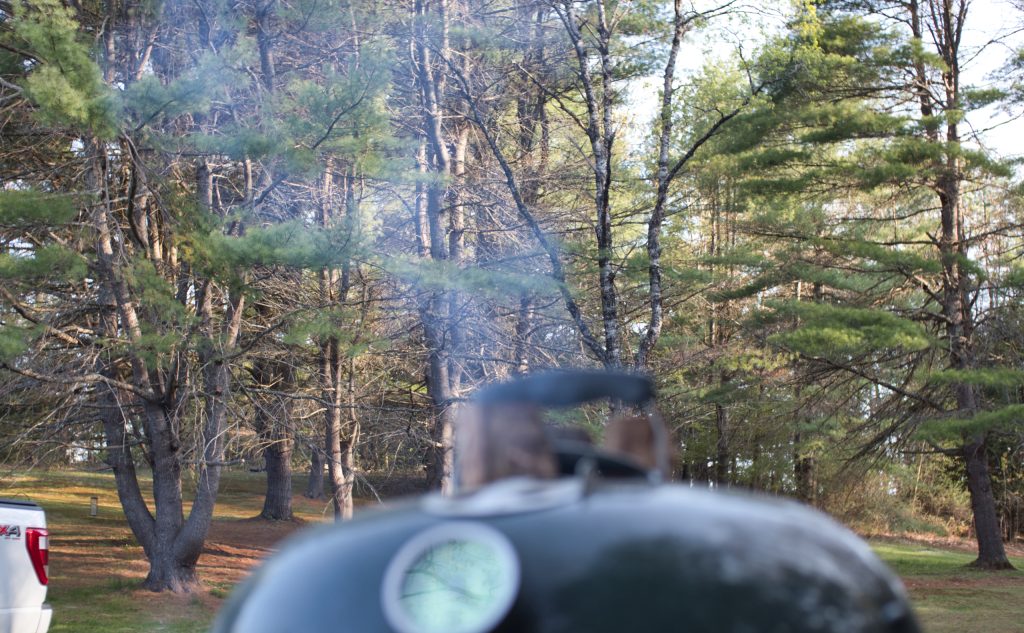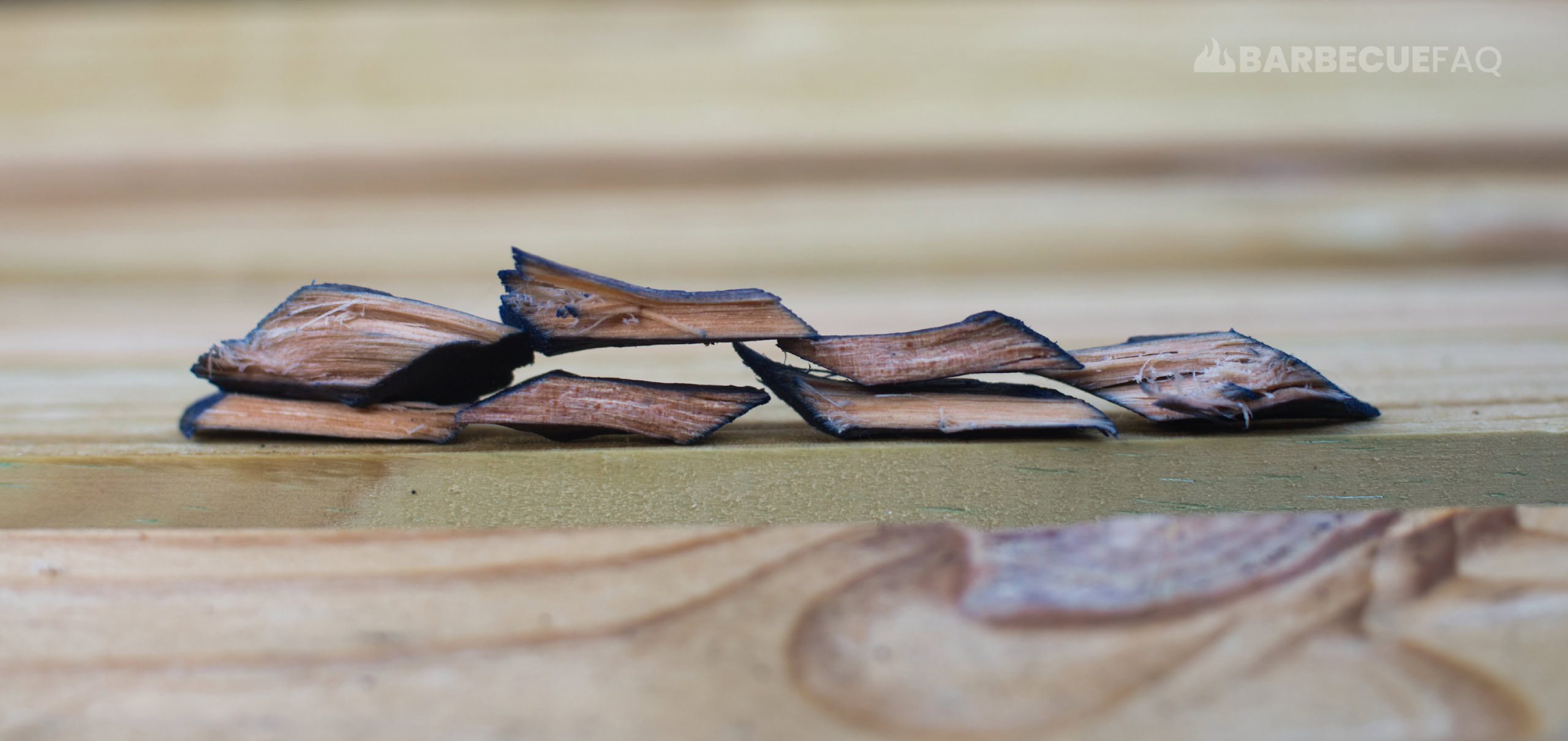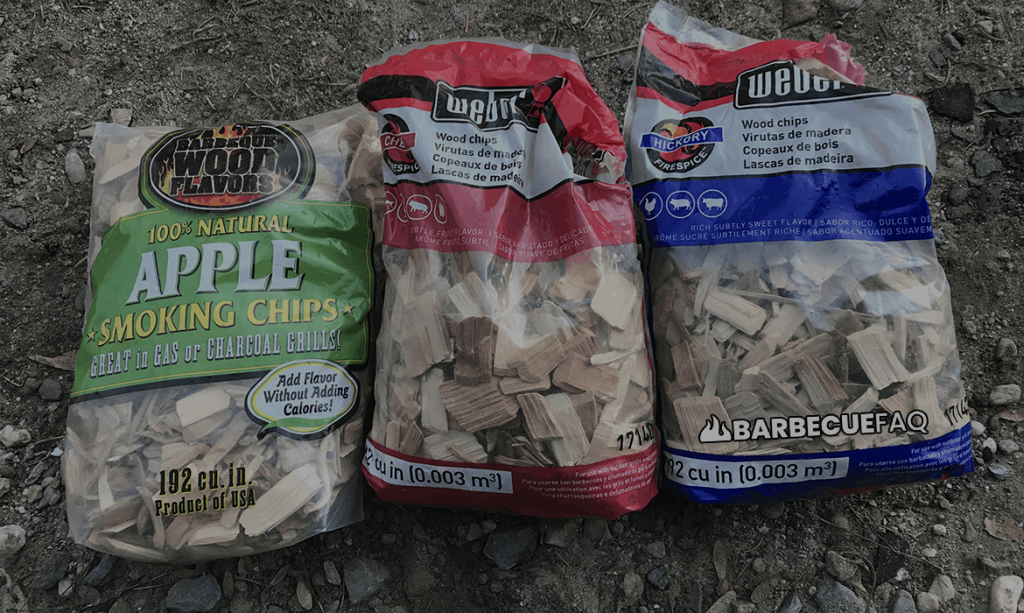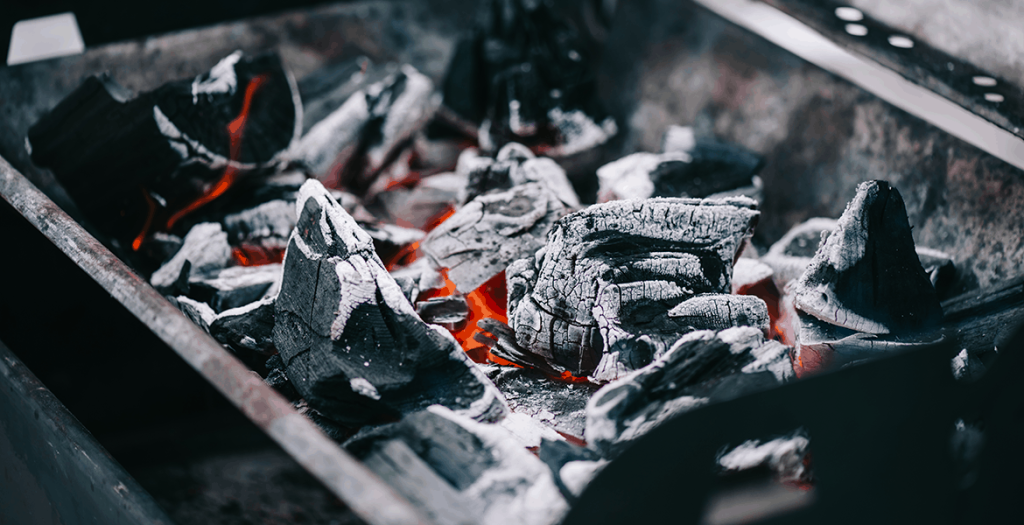To quickly answer this question:
No, you shouldn’t soak wood before smoking.
The Idea Behind Soaking Wood
The goal when “smoking” is to smolder the hardwood so that it burns slowly without a flame.
This way you get the desired “thin blue smoke.”

The idea behind the water is that it prevents it from catching on fire when you place the wood on the hot coals.
BUT
If you were to soak wood in water, the first thing that needs to vaporize is the water, after which the hardwood is then allowed to smolder.
Meaning, all you’re effectively doing is delaying how long it takes the wood to smolder, nothing more.
If you were to open the lid to peak at the food at any point after the water has vaporized, you still have the same potential for combustion as you did if you didn’t soak them.
Try it for yourself: Add your soaked wood, open the lid 20 minutes later and watch the wood catch on fire.
Proving that This Theory is Rubbish
In order to test this theory, I took a chunk of hickory and submerged it in water.
I also used several hickory wood chips and allowed those to “soak.” I repeated this test twice – one for 30 minutes, the other for 24 hours.

I also opted to buy some Royal blue dye to change the color of the water. The reason for the dye is to help when taking photos and to visually explain to You, the Reader, what’s happening.
30 Minute Soaking Wood Test
For all intents and purposes, this is the most commonly recommended application of this concept.
Products, articles, forums, etc. will all say to soak wood chips in water for 30 minutes.
Here’s a cross section of the wood chunk after being submerged for 30 minutes:

Here’s a cross section of the wood chips after being submerged for 30 minutes:

Unbiased comments on the findings:
Visual inspection of the blue dye shows that no water penetrated the wood – at least not to my naked eye.
The surface of the wood felt “wet” to the touch.
The cross-sections of the wood felt dry to the touch.
24 hour Soaking Wood Test
The reason I decided to soak the wood for 24 hours is because it’s an extreme application of the above concept and fully shows YOU that this concept doesn’t hold water – metaphorically or literally.
Here’s a cross section of the wood chunk after being submerged for 24 hours:

Here’s a cross section of the wood chips after soaking for 24 hours:

Unbiased comments on the findings:
Visual inspection of the blue dye shows that almost no water penetrated the wood – especially in the case of the wood chips. Slight ingress of moisture on the edges of wood chunks.
The surface of the wood felt “wet” to the touch.
The cross-sections of the wood felt dry to the touch.
Note: The wood chips were no longer floating after 24 hours and were at the bottom of the bowl in the morning.
Takeaways from This Experiment
As I hope is painfully obvious, soaking wood is pointless.
With that said, in both cases, the surface of the wood chunks and wood chips were “wet” to the touch. Meaning, when you place them on your fire, this surface moisture will be vaporized and delay how long it takes for the wood to smolder.
Meaning, any initial “smoke” you see isn’t actually smoke – it’s steam.
Here are my takeaways/comments:
- There is literally no difference in burn time if you soak wood chips. If anything, the “soaked” wood chips take longer to actually produce smoke.
- Wood chips don’t spontaneously combust. You can simply place your food on the smoker, place your wood chips on the fire, and close the lid. The wood will smolder and produce smoke.
- If you open the lid while the soaked wood chips are smoldering/smoking, they can still combust/catch on fire as any surface water has vaporized.





2 comments
Leo D Kadlec
Very interesting,thank’s
Josh
Good information here. One of my favorite comments on this topic came from Meathead Goldwyn over at amazingribs.com. He said, in effect, wood doesn’t absorb water. It’s why they build boats with it.